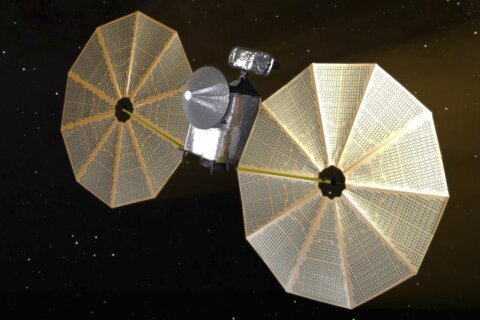We had a chance to see the northern lights (aurora borealis) this past week. What you may not know is that the April 16 geomagnetic storm that was causing the aurora was also sending powerful electrical currents into the ground around the D.C. region.
Now, we can gear up for another sky show. The April Lyrids meteor shower will continue through April 28, but peaks on the night of April 21. From a dark sky site with no moon, one can expect about a dozen meteors per hour. Some years, the shower has produced “outbursts” of up to 100 meteors per hour.
Where do these meteors come from? Each year in late April, our planet encounters a debris stream of cometary dust made by C/1861 G1 — also known as “Thatcher.”
As Earth orbits around the sun, it collides with this debris stream and the cometary debris particles — which can be as small as a grain of sand — hit our atmosphere at 29 miles per second (110,000 miles per hour), heating the atmosphere white hot and giving off the appearance of what we call “shooting stars” or “falling stars.”
You do not need any equipment or know-how to enjoy the show. Just find a place to put a lounge chair or blanket to see the sky. Starting at 10 p.m. in the northeast, the constellation for which this meteor shower is named, Lyra, hangs low above the horizon and will rise higher as the night progresses.
Sporadic meteors that are not part of the shower can be seen during the night as well. The shower should peak after midnight.
Lyrids can appear anywhere in the sky, but looking straight up gives you the widest viewing area — this is where the lounge chair or blanket come in handy. The moon will interfere a bit with viewing the shower just before dawn.
If you are a city-dweller, you may still be able to see the brightest Lyrids, as long as you are not staring into a streetlight or nestled in among tall buildings. The view of the Lyrids is still worth it from the suburbs as long as lights and obstructions are minimized as best you can.
If you’re up before dawn, and the clouds aren’t obscuring it, you may be able to catch a glimpse of Venus in the east.
There is still a lot happening in the sky as we wind down April, so check out Greg Redfern’s space forecast for the rest of the month. And follow him on Facebook, Bluesky and his daily blog to keep up with the latest news in astronomy and space exploration.
Get breaking news and daily headlines delivered to your email inbox by signing up here.
© 2025 WTOP. All Rights Reserved. This website is not intended for users located within the European Economic Area.




